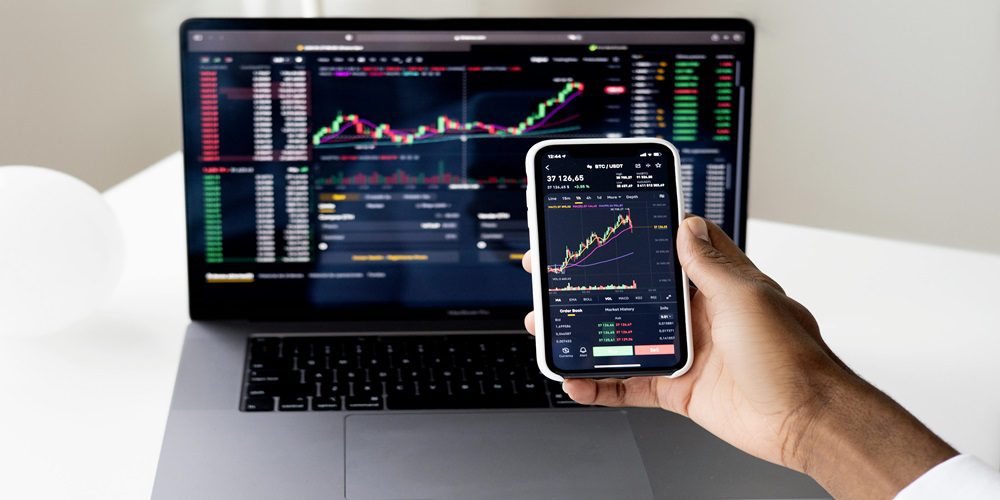Top Tips for Getting the Best Exchange Rate When Purchasing US Dollars

Are you planning a trip to the United States and want to get the most bang for your buck when exchanging currency? Look no further! In this blog post, we will share our top tips for getting the best exchange rate when purchasing US dollars. Say goodbye to high fees and unfavorable rates, and hello to maximizing your travel budget. Let’s dive in!
Why is it Important to Get the Best Exchange Rate?
When traveling to a different country or making international transactions, getting the best exchange rate is crucial. The exchange rate refers to the value of one currency in relation to another, and it can greatly affect your purchasing power. Therefore, it is important to understand why getting the best exchange rate is essential.
One of the main reasons why it is important to get the best exchange rate is for financial savings. A small difference in the exchange rate can result in significant cost differences when exchanging large amounts of money. For example, if you were exchanging $1000 at an exchange rate of 1.25 dollars per euro, you would receive 800 euros. However, if you were able to find an exchange rate of 1.30 dollars per euro, you would receive 830 euros instead. That’s a difference of 30 euros just by finding a slightly better exchange rate.
Besides saving money, getting the best exchange rate also ensures that you are getting fair value for your funds. When exchanging currencies, banks or other institutions often charge fees or add hidden costs that can significantly impact the amount received after conversion. By researching and comparing various options for obtaining US dollars or any desired currency at the best possible rates, you can avoid unnecessary expenses and ensure that you are receiving a fair deal.
Moreover, fluctuations in exchange rates are common and can happen quickly due to various economic factors such as inflation and interest rates. This means that the longer you wait to convert your currency into US dollars, for example, the more likely it is that the exchange rates will change unfavorably for you. Keeping an eye on current market trends and being proactive about exchanging your money at opportune times can help you lock in better rates.
Factors Affecting Exchange Rates
The exchange rate is the value of one country’s currency in terms of another country’s currency. It plays a crucial role in international trade and commerce, affecting the cost of imported goods, foreign investments, and tourism. As such, understanding the factors that influence exchange rates is essential for anyone looking to purchase US dollars or engage in any other foreign currency transactions.
1. Supply and Demand
At its core, exchange rates are determined by the basic economic principles of supply and demand. When there is a high demand for a currency, its value increases as buyers are willing to pay more for it. On the other hand, when there is an oversupply of a currency in the market, its value decreases as sellers compete with each other to sell it off.
2. Economic Factors
Economic factors such as inflation rates, interest rates, and employment levels also have a significant impact on exchange rates. Countries with lower inflation rates tend to have stronger currencies as their purchasing power remains relatively stable compared to countries with higher inflation rates. Similarly, higher interest rates attract foreign investors seeking better returns on their investments, thus increasing demand for that country’s currency.
3.Historical Performance
Currency traders often look at past performance trends when making trading decisions which can affect exchange rates. If a country has consistently maintained strong economic growth over time, this will positively impact its currency’s buying power against others.
4.Governmental Policies
Monetary and fiscal policies set by governments play an integral role in determining exchange rates. Governments can use tools like interest rate adjustments or quantitative easing to stimulate or slow down their economies – both having implications for foreign exchange markets.
5.Political Stability
Uncertainty surrounding political events such as elections or civil unrest can cause fluctuations in exchange rates because investors may consider alternative options that offer more stability during uncertain times.
6.Trade Deficits/Surpluses
The trade balance between countries also influences their respective currencies’ strength. For example, a country with a trade deficit (importing more than exporting) may see its currency weaken as it requires more foreign currency to pay for its imports.
Researching and Monitoring Exchange Rates
Researching and monitoring exchange rates is an essential step when it comes to getting the best exchange rate for purchasing US dollars. As a savvy consumer, understanding the factors that affect currency exchange rates can help you make informed decisions and get more value for your money.
Firstly, it is important to understand that exchange rates are constantly fluctuating. They are influenced by a multitude of factors such as economic conditions, political stability, and even natural disasters. Therefore, researching and monitoring these factors can give you insights into how the US dollar may be affected in the short or long term.
One way to research exchange rates is by keeping up with financial news and market trends. Keep an eye out for any major economic events or announcements that could influence the strength of the US dollar against your local currency. For instance, if there are signs of instability in the US economy, this could lead to a decrease in demand for the dollar and therefore a lower exchange rate. On the other hand, positive economic developments could strengthen the dollar’s value.
Another valuable source of information is online currency converters or foreign exchange trading platforms. These tools provide real-time updates on current exchange rates and allow you to track historical data as well. You can also set up notifications to receive alerts when your desired exchange rate is reached.
Aside from researching, regularly monitoring exchange rates is crucial in determining when to make your purchase. Exchange rates change quickly and missing out on a favorable rate could result in significant losses when exchanging large sums of money.
It’s also worth considering timing your purchase during times where markets may be less volatile or during off-peak travel seasons when there may be less demand for US dollars.
Furthermore, taking note of potential fees or commissions charged by banks or currency converters should also factor into your decision-making process. Comparing different providers’ fees can help save you money in the long run.
In addition to external factors influencing exchanges rates, internal ones such as personal financial goals and budgetary constraints should also be considered. Having a clear understanding of your financial needs and objectives before making the exchange can guide you in choosing the best time to purchase US dollars.
Timing Your Currency Exchange
The first step in effective timing of your currency exchange is to keep a close eye on market trends and economic indicators that affect currency values. This includes paying attention to political events, economic reports, and global news that can impact exchange rates. For example, if there is an impending political or economic event that may negatively affect the US dollar’s value, it may be wise to hold off on exchanging until after the event has passed.
Another important factor to consider is the time of day when conducting currency exchanges. The foreign exchange market operates 24 hours a day, five days a week, which means that rates can change at any moment. However, there are certain times during the day when trading activity and volatility tend to be higher than others. These peak trading times include overlaps between major markets such as London and New York or Tokyo and Sydney.
Furthermore, choosing the right day of the week for your currency exchange can also have a significant impact on your overall rate. Typically, Mondays and Fridays tend to see lower trading volumes compared to mid-week trading days such as Tuesday through Thursday. This means that mid-week may present better opportunities for obtaining favorable rates due to increased liquidity in the market.
It’s also worth noting that seasonal factors can influence currency fluctuations as well. For instance, if there is higher demand for US dollars during peak travel seasons such as holidays or summer vacation periods, you may find yourself with less buying power compared to other times of the year.
It’s important not only to pay attention to external factors but also have a clear understanding of your own financial needs before exchanging currencies. If you foresee needing US dollars in advance for upcoming expenses such as tuition fees or rent payments, it may be wise to lock in a favorable exchange rate beforehand.
Strategies for Getting the Best Exchange Rate
When it comes to purchasing foreign currency, one of the main concerns for travelers is getting the best exchange rate. While it may seem like a small difference, even a slight variation in exchange rates can greatly impact your budget and overall expenses during your trip. Therefore, it is important to be strategic when exchanging currencies and keep an eye out for the best possible exchange rates. In this section, we will discuss some tried-and-tested strategies for getting the best exchange rate when purchasing US dollars.
1. Plan Ahead: One of the most effective ways to get a good exchange rate is by planning ahead. This means avoiding last-minute currency exchanges at airports or tourist areas where you are likely to get unfavorable rates. Instead, research and plan ahead about where you can find reliable money changers or banks with competitive rates.
2. Monitor Currency Trends: Keep updated on current market trends and fluctuations in currency values. Following financial news and tracking currency conversions online can give you an idea of what an ideal exchange rate should look like at the time of your travel. Make use of reputable websites that provide real-time currency conversion data to help you make informed decisions.
3. Avoid Dynamic Currency Conversion (DCC): When making purchases abroad, you may come across DCC – a service offered by merchants that allows you to pay in your home country’s currency rather than the local currency of the country you are visiting. While this might seem convenient at first glance, it often comes with a high conversion fee which can significantly impact your overall expenses.
4.Gather Multiple Quotes: Before choosing where to get your dollars exchanged, gather quotes from multiple sources such as banks, local money exchangers or even online services. Comparing quotes can give you an idea of how much more value for money each option offers so that you can make an informed decision.
5.Traveler’s Checks or Debit/Credit Cards: Consider using traveler’s checks instead of cash or using your debit/credit cards to withdraw funds from ATMs. These options often offer better exchange rates and are relatively safer than carrying large amounts of cash.
6. Negotiate: Don’t be afraid to negotiate for a better rate when exchanging currency, especially if you plan on exchanging a large amount. Many money changers may offer competitive rates when asked, as they want to attract more customers.
Avoiding Common Pitfalls and Scams
First and foremost, it is important to avoid exchanging currency at airports or tourist areas. These locations often have high fees and unfavorable exchange rates. Instead, opt for exchanging money at a bank or reputable currency exchange office.
Another common pitfall when exchanging currency is falling victim to hidden fees. Many banks and financial institutions charge hidden fees for foreign transactions, which can significantly decrease the amount of US dollars you receive. To avoid this issue, always ask about any potential fees before completing an exchange.
Additionally, be cautious of street vendors or individuals offering “great” exchange rates on the street. These offers may seem appealing but they often involve scams where fake or invalid bills are exchanged. It is best to only conduct exchanges with licensed businesses or institutions.
In some cases, travelers may also encounter counterfeit US dollars during their trip. This can be avoided by being attentive and checking the security features on all bills received during an exchange. Some common security features include watermarks, raised printing, and hologram strips.
Aside from these pitfalls, there are also several scams that travelers should be aware of when exchanging currency abroad. A popular scam involves the use of rigged calculators that provide incorrect conversion rates in favor of the business conducting the exchange. To avoid this scam, always double-check your calculations using a calculator or trusted currency converter app.
Another common scam is known as “dynamic currency conversion”. This occurs when a merchant gives customers the option to pay in their home country’s currency instead of local currency during a purchase transaction. While this may seem convenient at first glance, it often results in unfavorable exchange rates and additional fees being charged by both parties involved.
Alternatives to Traditional Currency Exchange Methods
As the world becomes increasingly globalized, more and more people are traveling internationally for business or pleasure. This means that there is a growing demand for foreign currency exchange, with the US dollar being one of the most commonly exchanged currencies. While traditional currency exchange methods may seem like the go-to option, there are actually several alternatives that can help you get a better exchange rate when purchasing US dollars.
1. Online Money Transfer Services
One alternative to traditional currency exchange methods is to use online money transfer services such as TransferWise, PayPal, or Venmo. These services allow you to transfer money from your bank account in your home country directly into a US bank account at a lower cost than traditional banks. Additionally, some of these services offer competitive exchange rates and waive transaction fees for certain amounts of money transferred.
2. Peer-to-Peer Currency Exchange
Another emerging trend in the realm of foreign currency exchange is peer-to-peer exchanges through online platforms like CurrencyFair and WeSwap. These platforms connect individuals looking to buy and sell different currencies without involving banks or other intermediaries, resulting in lower fees and potentially better exchange rates.
3. Credit Cards
Using credit cards instead of cash when traveling can also be a smart way to save on foreign currency exchange fees. Many credit card companies offer favorable exchange rates when making purchases abroad, although it’s important to check with your specific provider beforehand as they may charge extra fees for international transactions.
4. Prepaid Travel Cards
Prepaid travel cards work similar to debit cards but are pre-loaded with a set amount of money in the desired currency before your trip begins. These cards often have no transaction fees or added costs for withdrawing cash abroad while also offering more security than carrying large sums of physical cash.
5. Cryptocurrency Exchanges
For those who are tech-savvy and open-minded about adopting new concepts, cryptocurrency exchanges provide another alternative for exchanging USD at potentially lower costs compared to traditional methods. However, it’s important to note that these exchanges are still relatively new and may come with a higher level of risk.
Conclusion
In today’s globalized economy, securing the best exchange rate for purchasing US dollars is crucial. By following these top tips, you can ensure that you are getting the most value for your money and making informed decisions when exchanging currency. Remember to do thorough research, consider alternative options such as using a credit card or prepaid travel card, and keep an eye on market fluctuations. With these strategies in mind, you can confidently make purchases in US dollars without worrying about losing out on valuable savings. So start planning your next trip and take advantage of the best exchange rates available!




